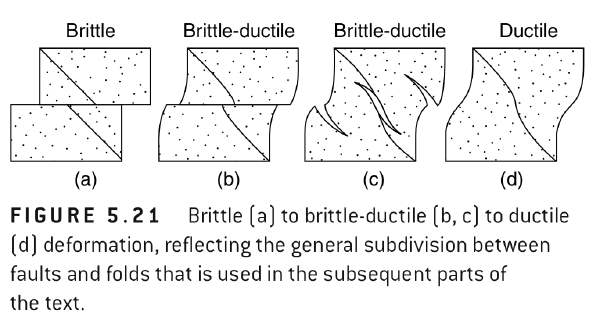
Why Study These? Ductile shear zones are common in basement terranes, that is high grade metamorphic rocks, so people who study these care. Shear zones in basement often transport fluid, dilate and may host mineralization. Others studying lower grade rocks may observe fault zones with characteristics of higher grade shear zones. Kinematics is the key issue to unravel, which direction did those rocks move?

Zones of distributed semi-brittle deformation around faults shows some similar features and provide clues to transport direction and a basis for relating structures to the faulting.
K
inematics or Sense of Shear Indicators in Ductile Shear Zones:
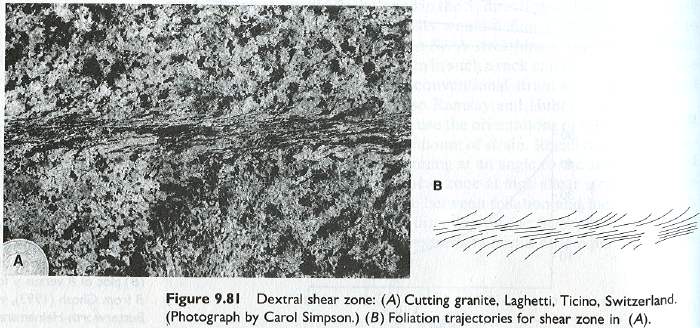
Start with the foliation: (from Davis and Reynolds, Structural Geology of Rocks and Regions, 1996)
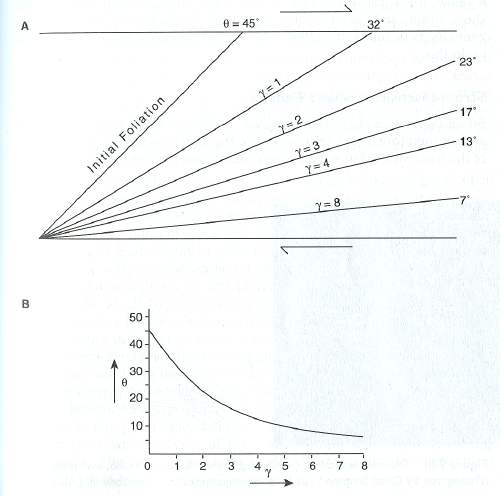 |
Shear Zone Foliation and Strain: Calculate strain from inclination of foliation from shear zone: g = 2/tan2q', q' = angle between shear zone and foliation. Assumes simple shear. (from Davis and Reynolds, Structural Geology of Rocks and Regions, 1996) |
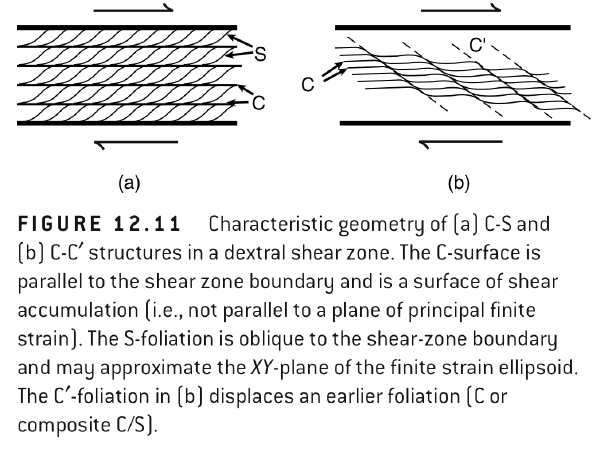
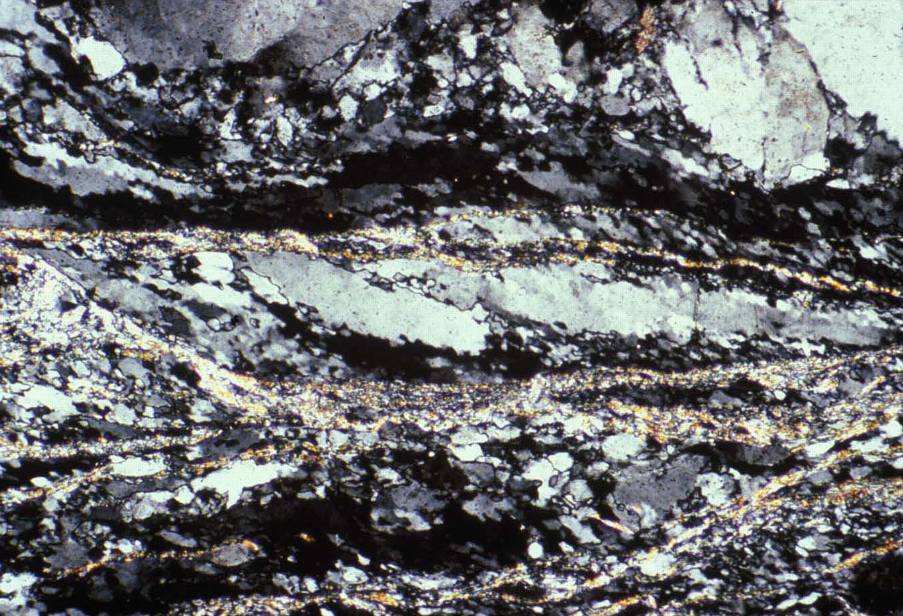
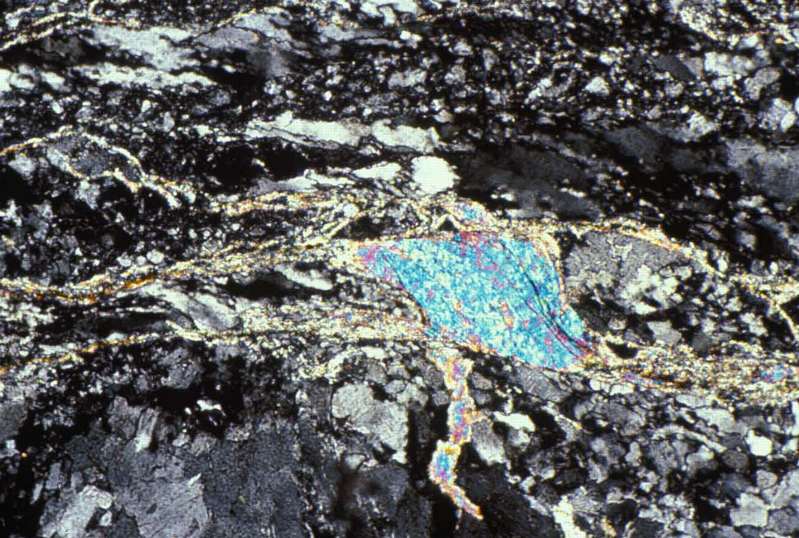
C-S Fabric: Note inclined muscovite grain (S fabric) with flat-lying mica-rich shear zones (C- fabric). Mica forms what is called a fish. Left lateral offset. Sample from large normal fault in Andes, photo by Glen Wallace.
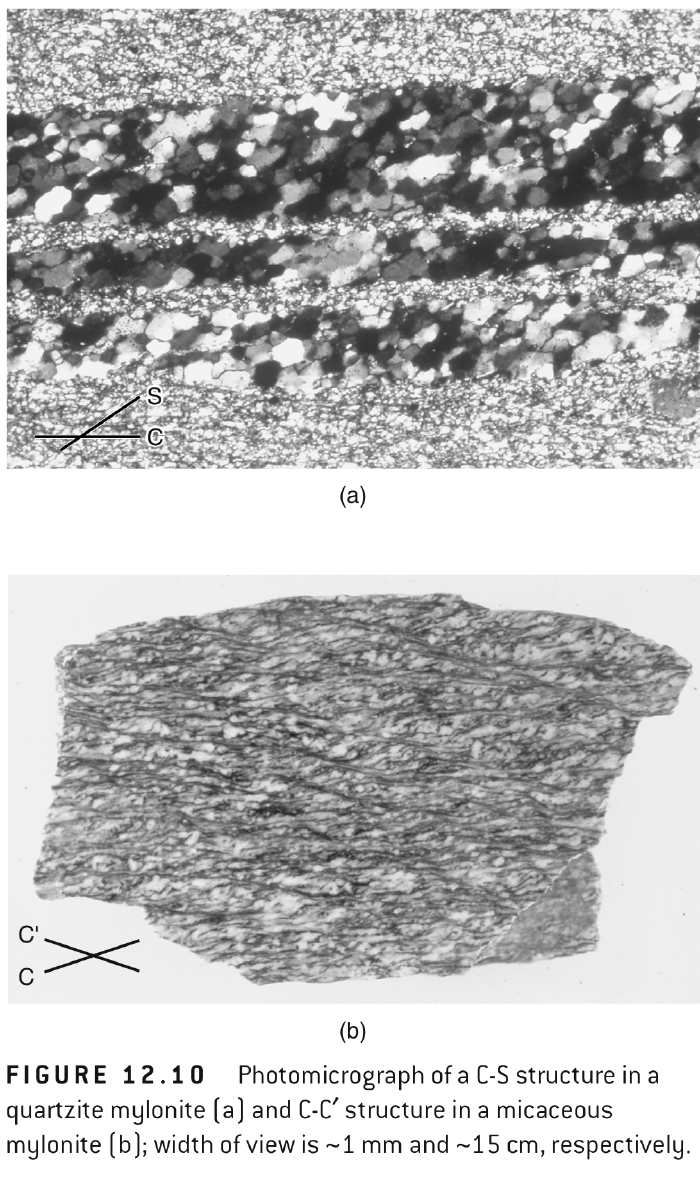
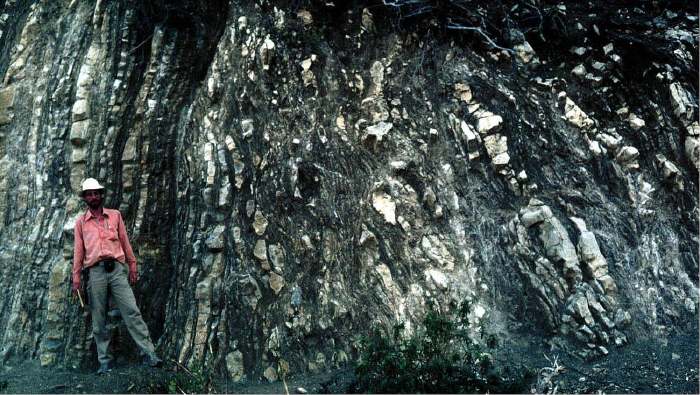
Vertically oriented shear zone boundary (C) with S-fabric (boudinaged sandstone layers) inclined to right. Left side up. Eocene accretionary prism, Dominican Republic.

C-S fabric in melange Kodiak Is. Alaska: C fabric parallel to barrel of pistol. S-fabric steeply inclined to left. Note fish-like greenstone blocks.
Folding in a confined Shear Zone:

Sheath Folds: Rotation of fold axes if they are not in principal directions.
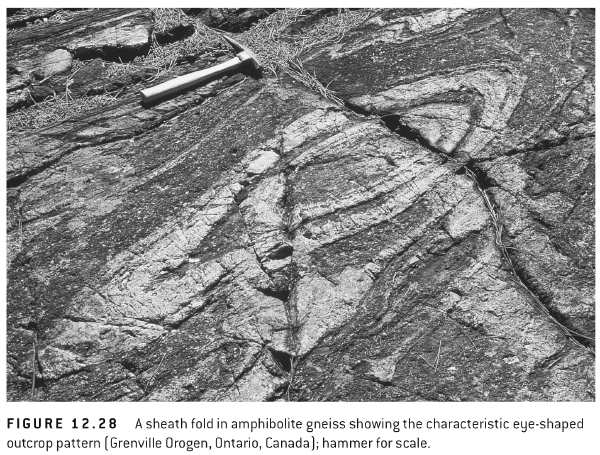
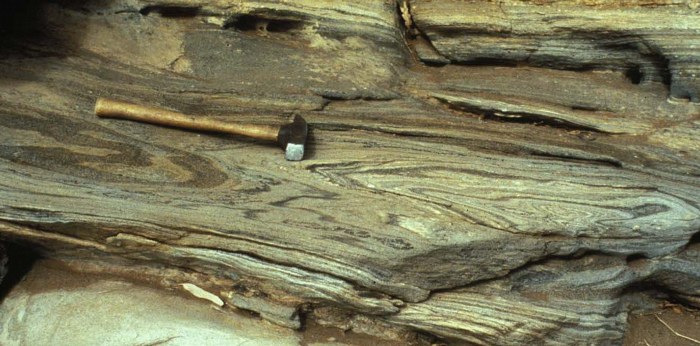
Sheath fold: Note enclosed bomerang structure near left end of hammer. O. Tobisch photo.
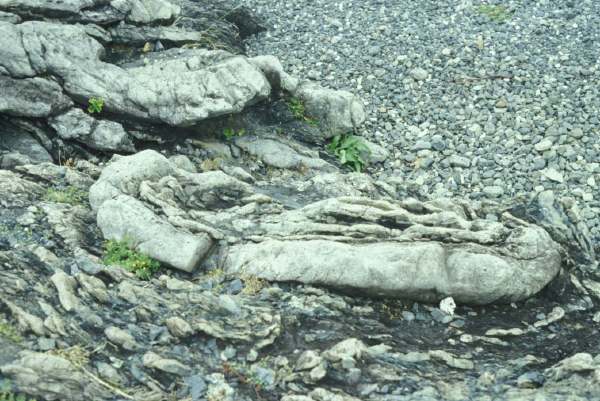
Eye structure in sub-greenschist facies (< 200 deg C). Turbidite sequence, SW Japan.
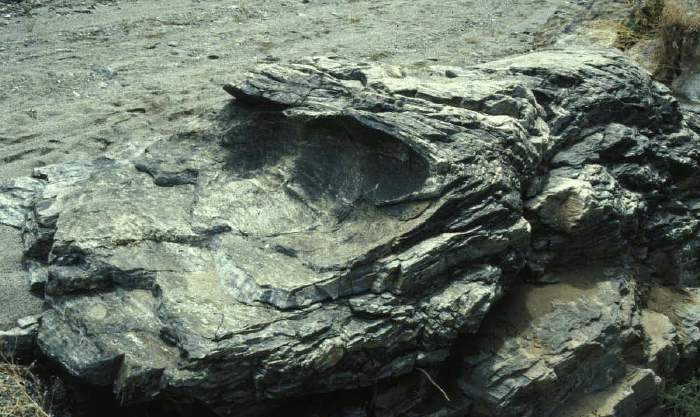
Fold in core complex gneiss. Note how fold axis parallels mineral lineation, both trending from lower right to upper left.
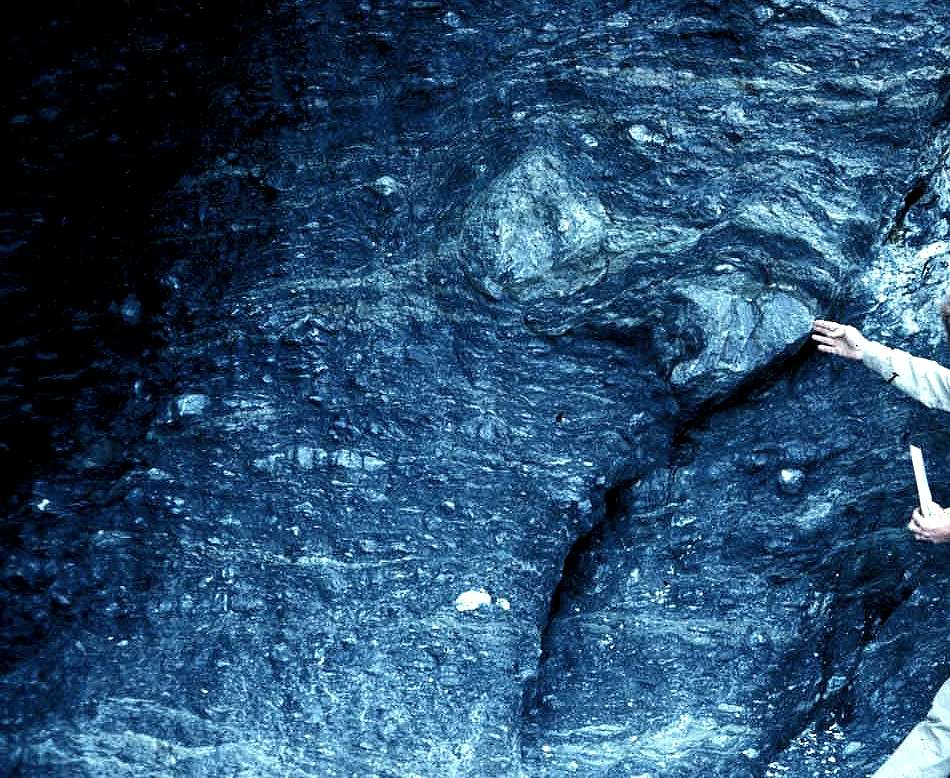 Fold hinge oriented parallel to transport direction in melange,
Kodiak Islands, Alaska.
Fold hinge oriented parallel to transport direction in melange,
Kodiak Islands, Alaska.
Structures from Strike-slip Fault zones, a Shear Zone at the Surface (p.484-487 in book)
These structures show similar features to those in ductile shear zones. Both sets of structures are ultimately related to the development of a strain ellipsoid in a shear zone and features that must occur because of this change in shape of the strain ellipsoid. No compression across shear zone is occurring, nor is there a bend in the fault. These structures develop by deforming the block by "simple shear".

Riedel Shears: Geometrically similar to C' shear bands in ductile shear zones.

Presence of free surface (ground surface) complicates structural response, because upward extension is allowed, for example in the formation of folds and thrusts above. Strain becomes 3 dimensional in these cases. With conjugate Riedel shears no upward extension need occur and strain is two dimensional.

Examples from brittle-ductile Shear Zones

Veined and cleaved zone. Cleavage inclined to right indicates left lateral shearing (top to left). Veins open in geometry consistent with this sense of shear. O. Tobisch photo.
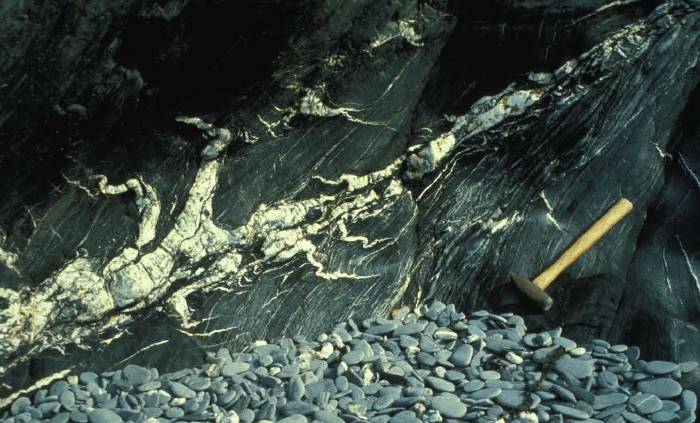
Veined fault zone. Top moves from lower left to upper right. Cleavage indicates finite flattening surface. Vein tips form perpendicular to flattening direction and are rotated. Kodiak slate belt, Kodiak Is. Alaska.
Deformation in Brittle-Ductile Zone: Influence of strain rate, stress difference and fluid pressure can result in both and ductile structures at same location but at differing times.
Example from Moss Beach Field Trip:
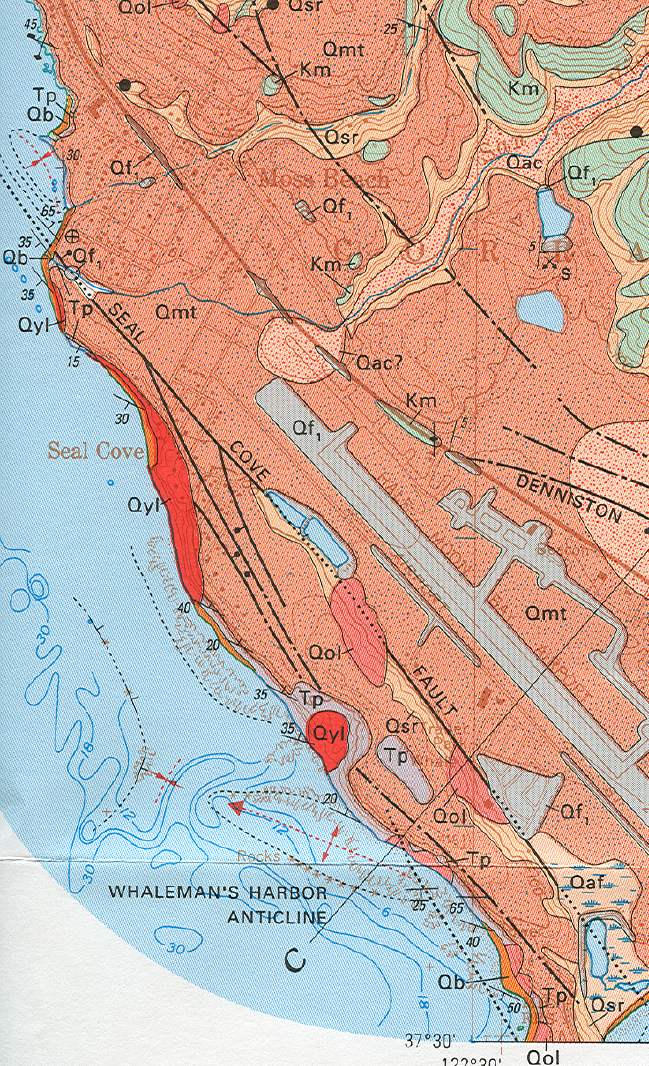
Note development of Whaleman's Harbor Anticline. Is its orientation predicted by sense of shear on Seal Cove Fault? What about syncline at Moss Beach that mapped. Is its orientation consistent with shear on Seal Cover Fault?
Use of the term drag fold. Folds formed due to simple shear in strike-slip zones not called drag folds, but can be deformed by drag. Folds formed in confined shear zones, on their way to becoming sheath folds, could be called drag folds.